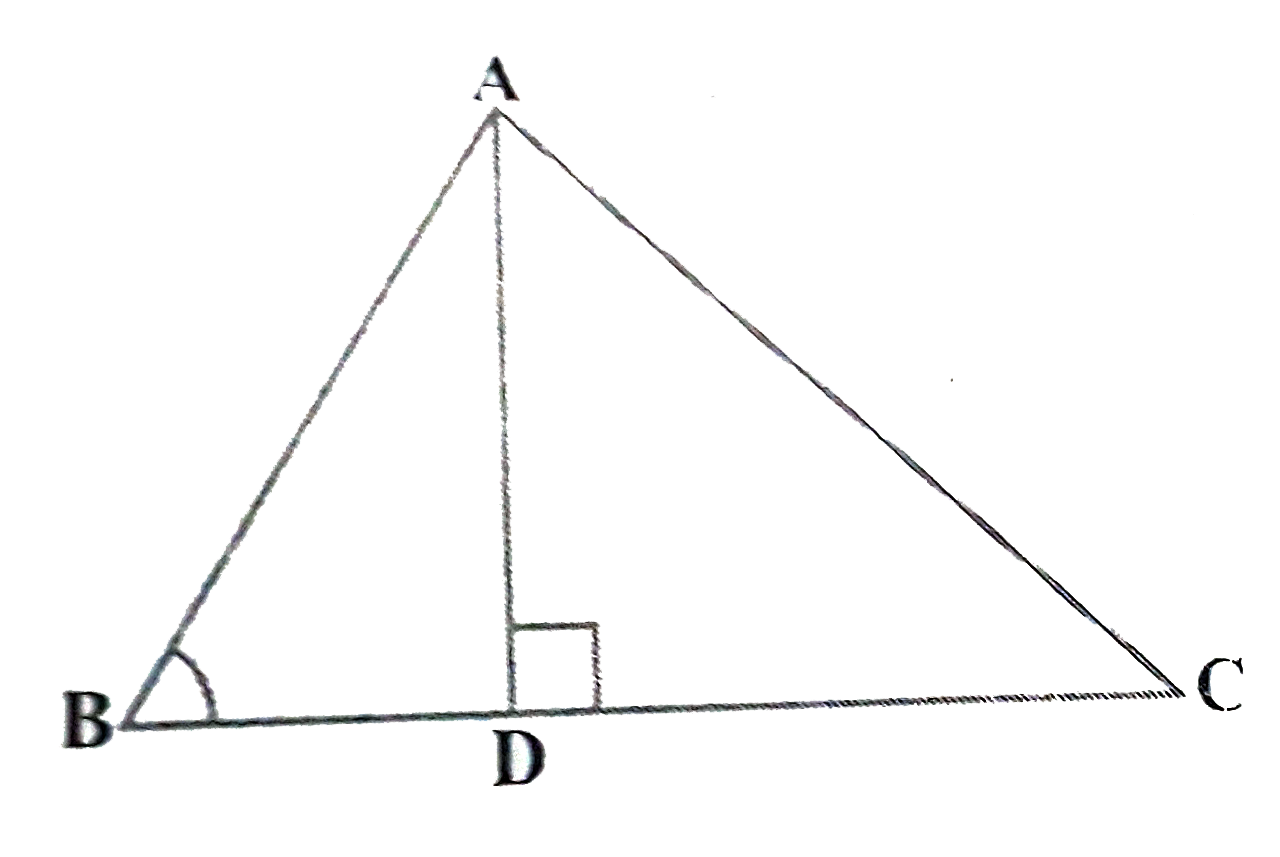ABC is a triangle in which AB=AC and P is a point on AC . Through C a line is drawn to intersect BP produced at Q such that ∠ABQ= ∠ACQ. Prove that: ∠AQC=900+12∠BAC
Answer
Given: ABC is a triangle in which AB=AC and p is point on AC.
Through c a line is drawn to intersect BP Produced at QSuch that, ∠ABQ=∠ACQ.
∠ABQ=∠ACQ
⇒A,B,C and Qare concyclic points.
Theorem used---------------[If a line segment joining two points subtendes equal angles at two other points lying on the same side of the line segment, then the four are concyclic]
NOW,
AB=AC
⇒∠ACB=∠ABC
But in triangle ABC
∠BAC+∠ACB+∠ABC=180∘
⇒∠BAC+2∠ACB=180∘ (∴∠ACB=∠ABC)
⇒∠ACB=90∘−12∠BAC..... (1)
Also,
∠ACB=∠AQBand∠BAC=∠BQC (angles in the same segment are equal)
⇒∠BAC+∠ACB=∠AQB+∠BQC
⇒∠BAC+∠ACB=∠AQC
∠ACB=∠AGC−∠BAC ...(2)
from equations (1) and (2)
we have,
⇒∠AQC−∠BAC=90∘−12∠BAC
⇒∠AQC=90∘+12∠BAC.
Hence proved.
Topper's Solved these Questions
Similar Questions
In ABC, ∠A=60o . Prove that B C^2=A B^2+A C^2-A B.A C .
View SolutionABC is a triangle, P is a point on ABandQ is a point on AC such that ∠AQP=∠ABC. Complete the relation AreaofAPQAreaofABC=.()AC2 .
View SolutionIn a ABC,EandF are the mid-points of ACandAB respectively. The altitude AP to BC intersects FE at Q Prove that AQ=QP
View SolutionABCD is a parallelogram. P is a point on AD such that AP=13 AD and Q is a point on BC such that: CQ=13BC. Prove that AQCP is a parallelogram.
View SolutionIn Figure, ABCD is a parallelogram in which P is the mid-point of DC and Q is a point on AC such that CQ=14AC. If PQ produced meets BC at R, prove that R is a mid-point of BC
View SolutionIf ABC is an isosceles triangle such that AB=AC and AD is an altitude from A on BC . Prove that (i) ∠B=∠C (ii) AD bisects BC (iii) AD bisects ∠A
View SolutionIn figure, ABC is a triangle in which ∠ABC=90∘and AD⊥BC. Prove that AC2=AB2+BC2−2BC.BD.
 View Solution
View SolutionABC and DBC are two isosceles triangles on the same bas BC and vertices A and D are on the same side of BC . If AD is extended to intersect BC at P, show that AP bisects \ ∠A as well as ∠D AP is the perpendicular bisector of BC
View SolutionThe diagonals of a parallelogram ABCD intersect at a point O. Through O, a line is drawn to intersect AD at P and BC at Q. Show that PQ divides the parallelogram into two parts of equal area.
View SolutionABCD is a parallelogram whose AC and BD intersect at O. A line through O intersects AB at P and DC at Q. Prove that ar ( POA)= ar ( QOC).
View Solution

